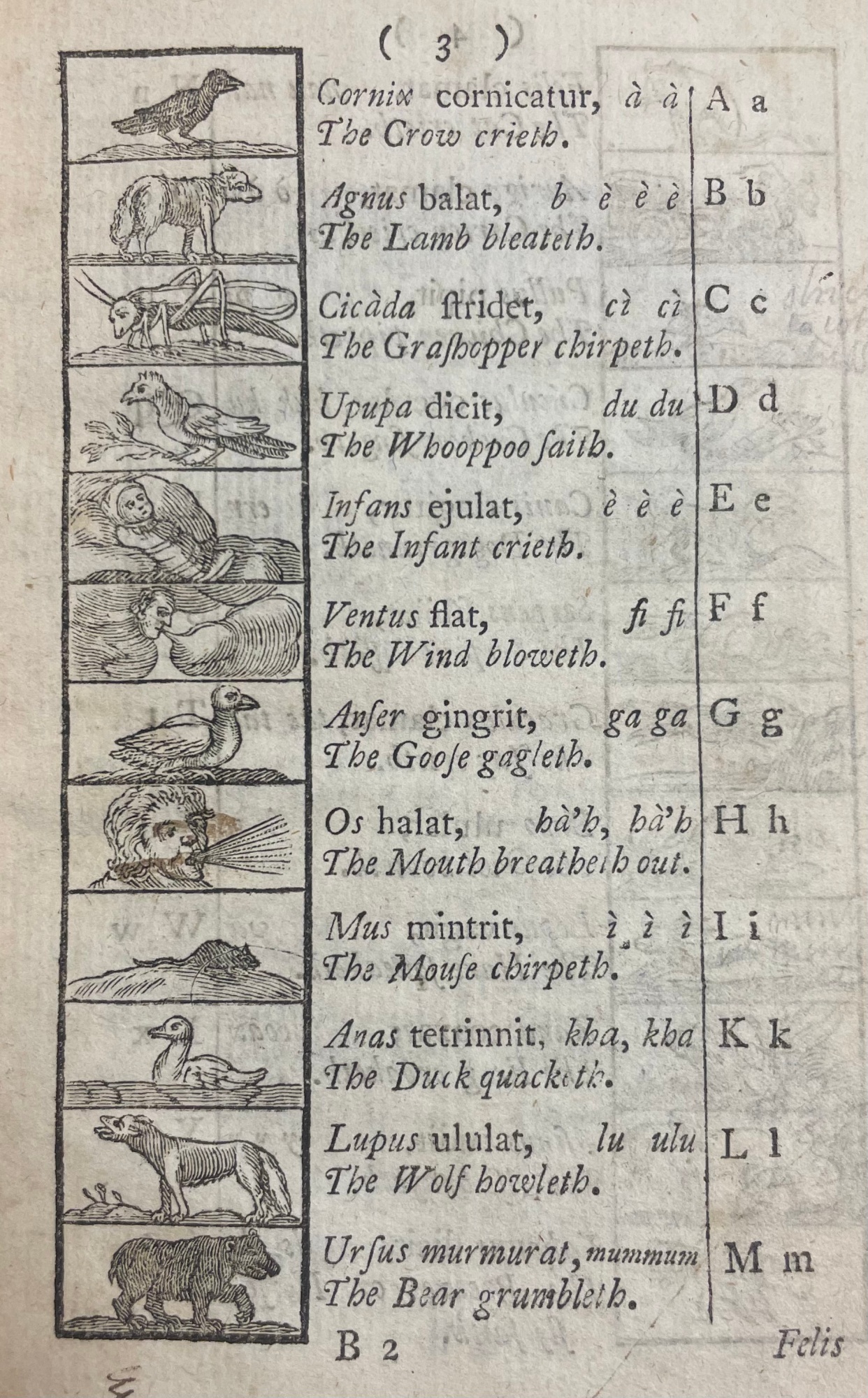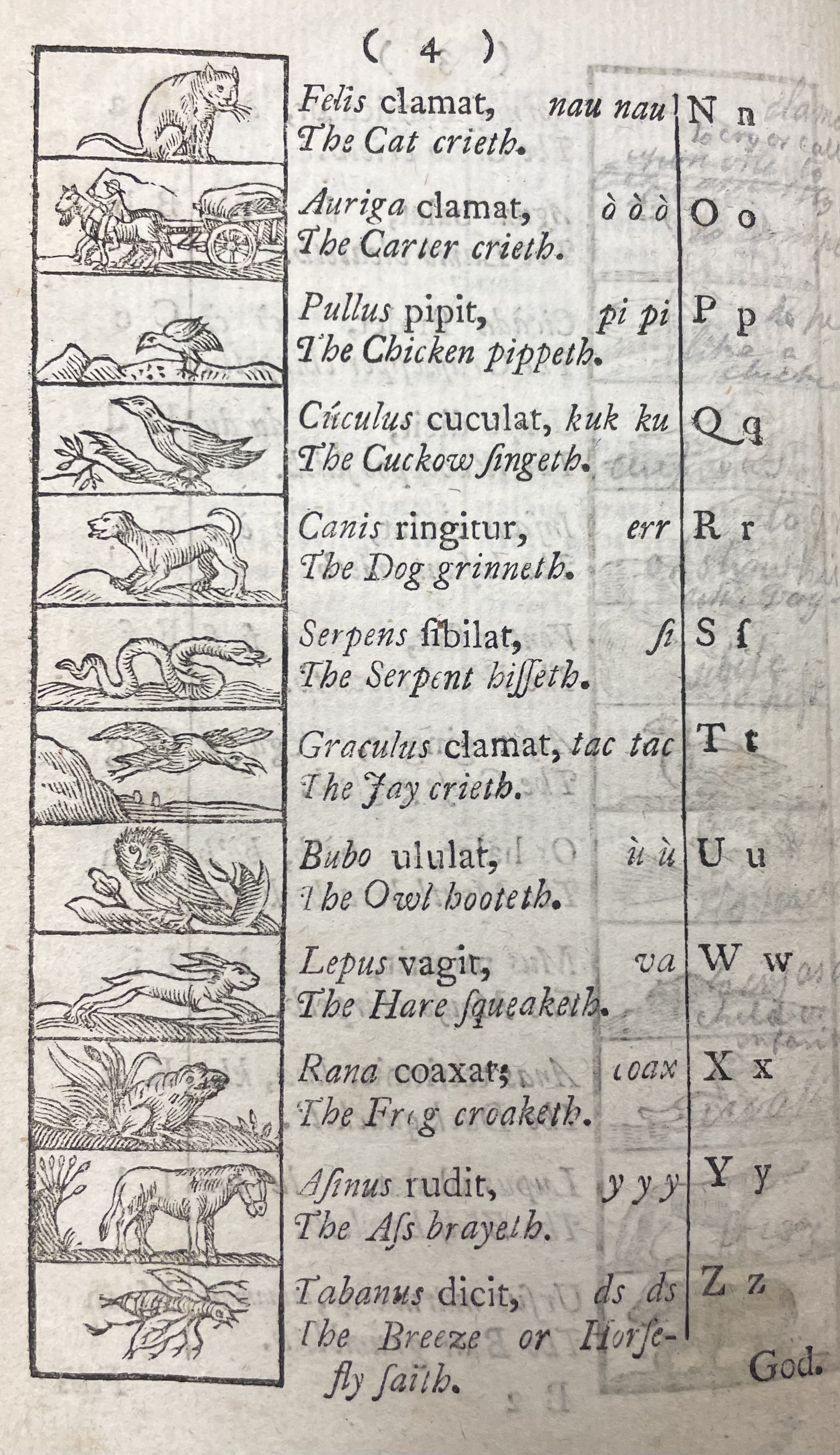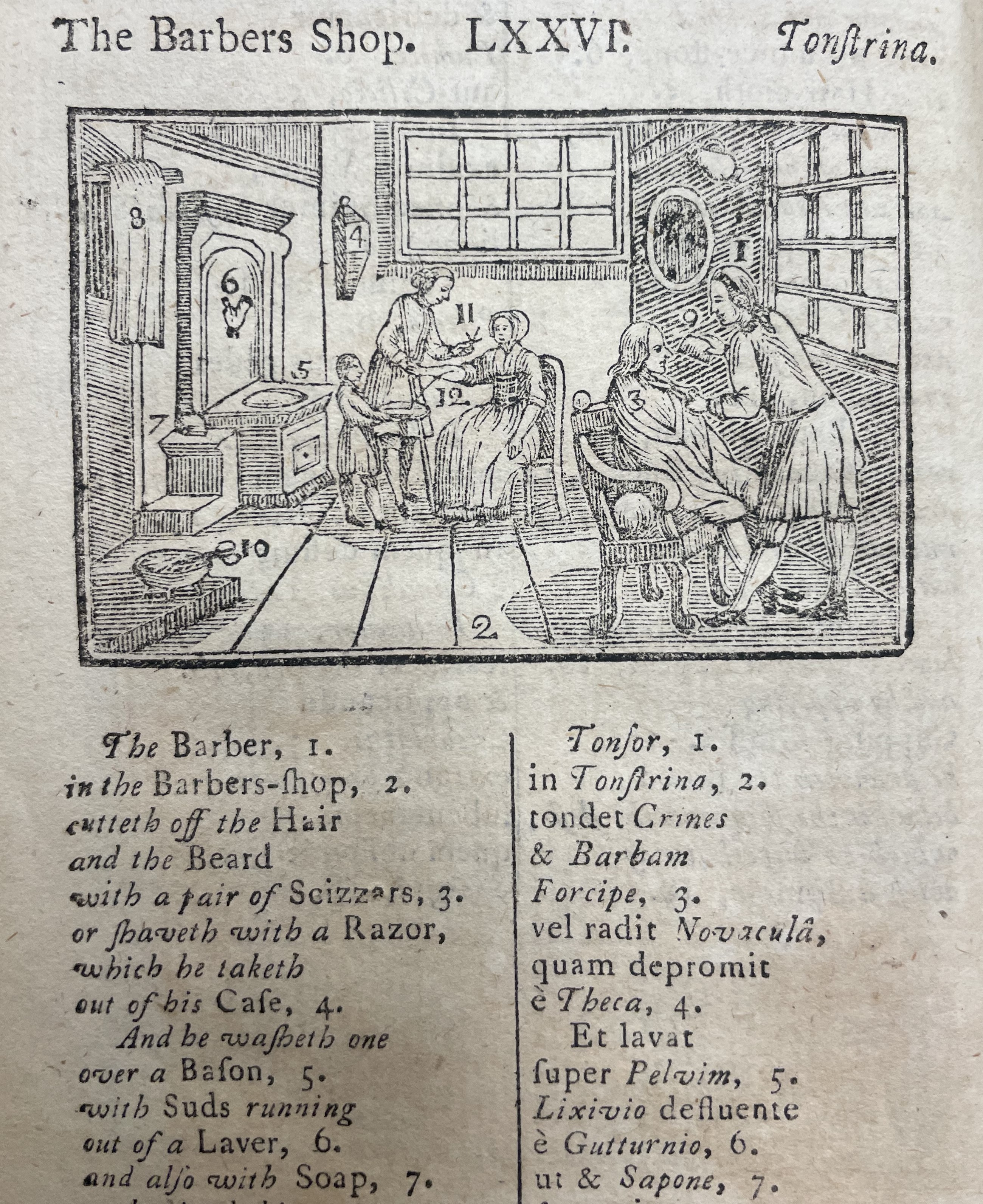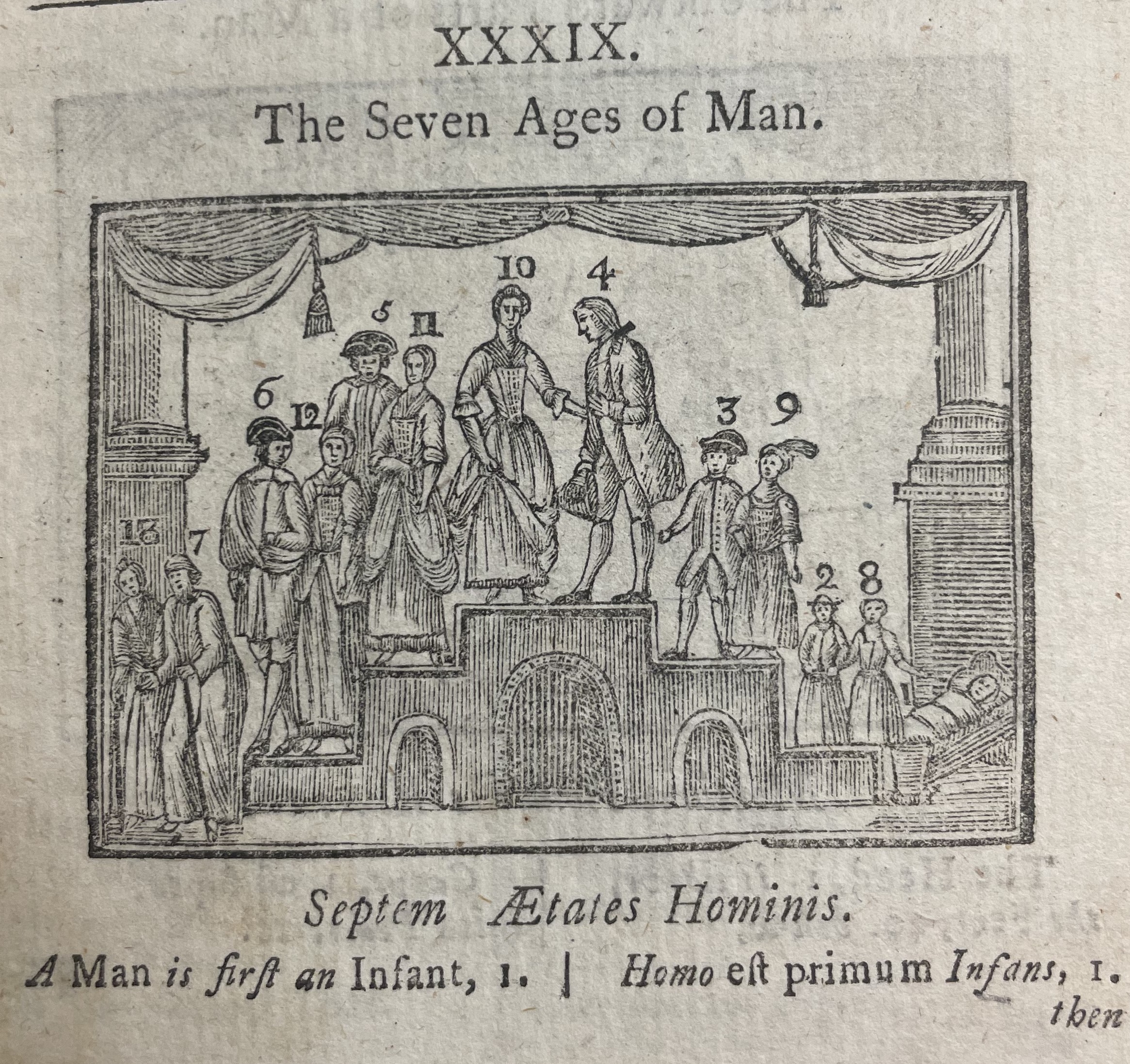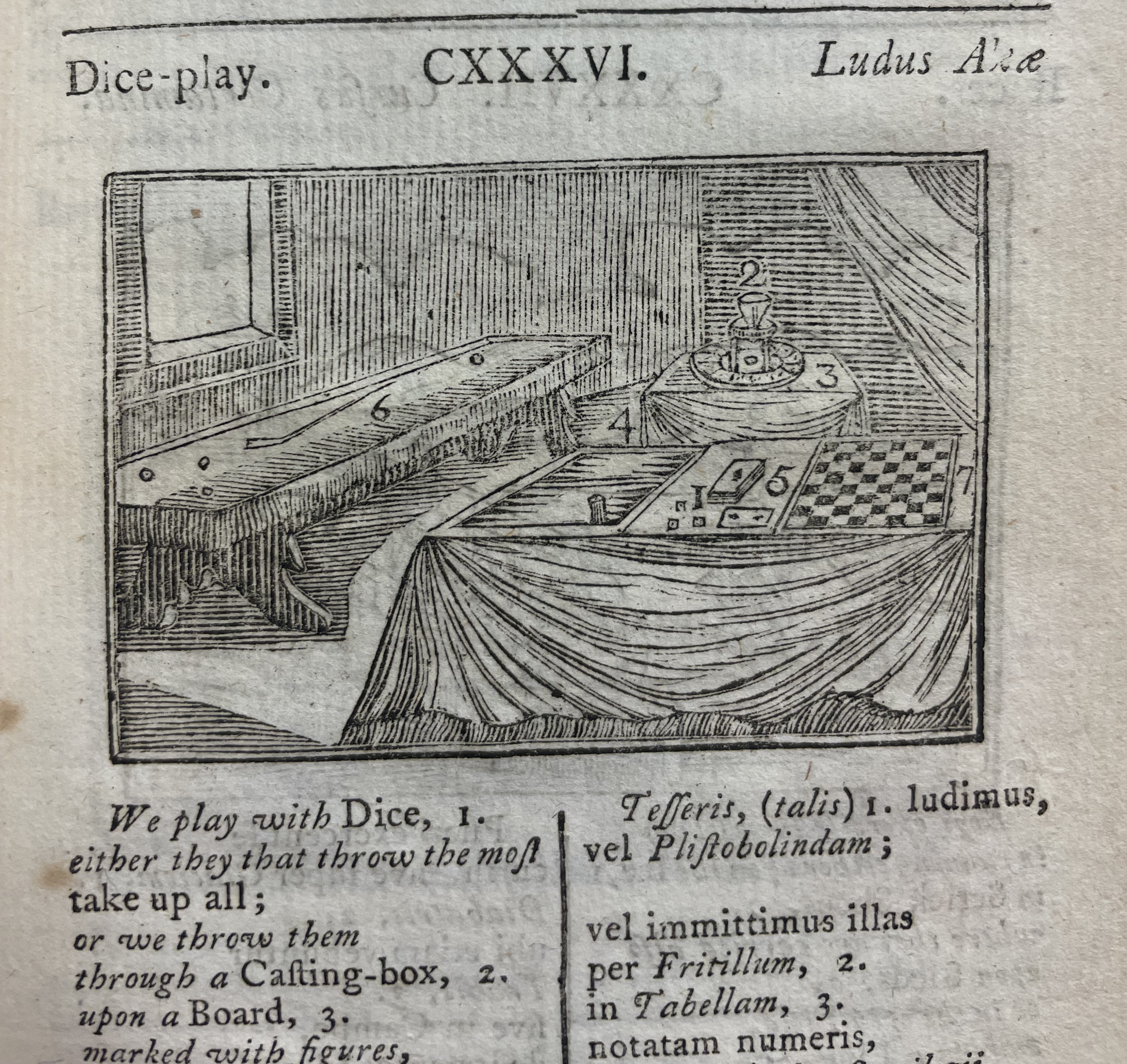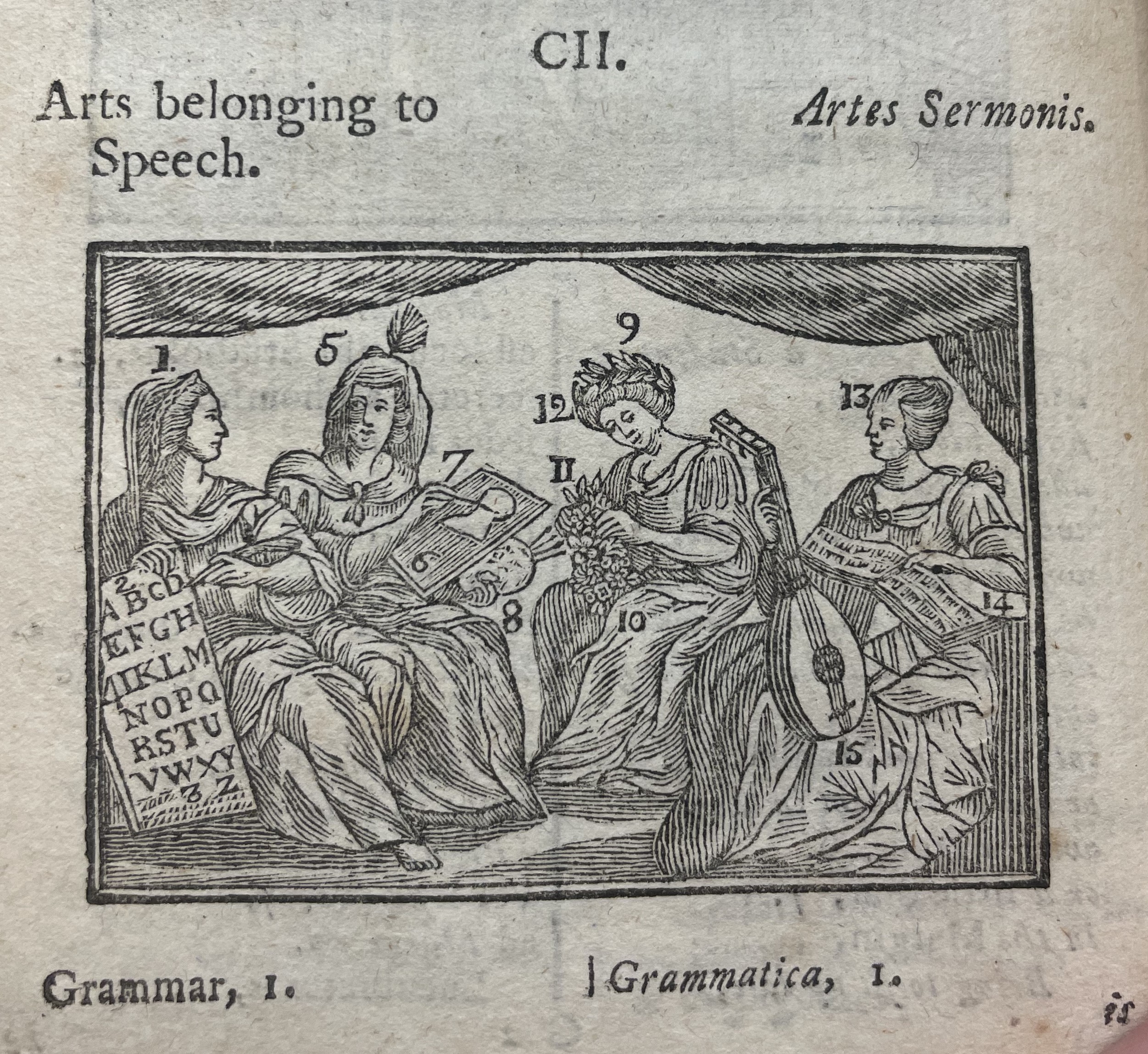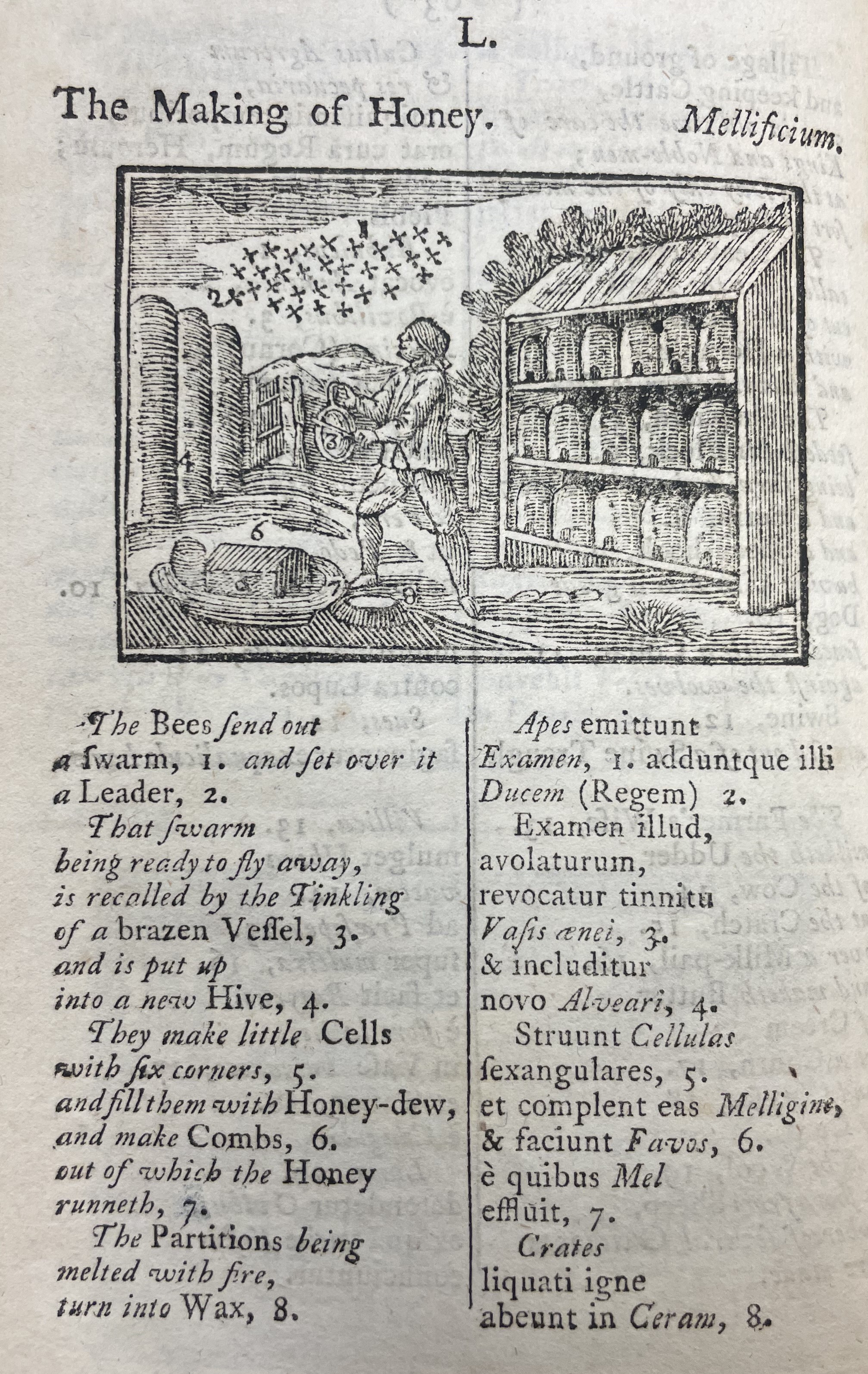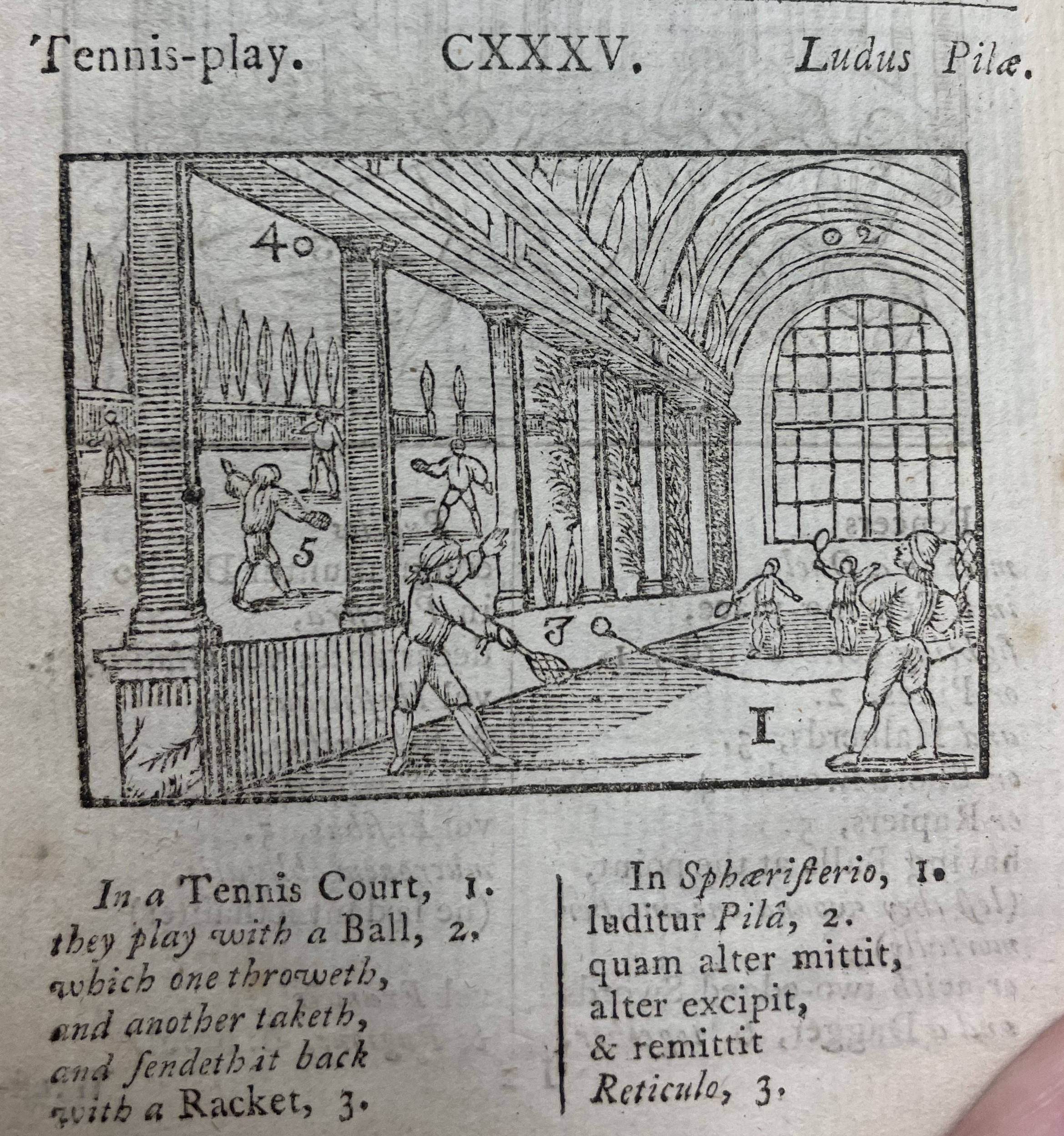By Yvette Campbell, Assistant Librarian, Special Collections & Archives
Everyone knows there is nothing like receiving (and giving!) a book for Christmas, especially for a child. Have you ever wondered what was the first popular picture book for children? Well look no further for a little bit of background information to use as a conversation piece around the cosy Christmas fire this year.

While cataloguing the early printed books in the Russell Library, I came across this charming and unassuming octavo sized book with the most exquisite but simple illustrations. John Comenius’ Orbis Sensualium Pictus (or The World of Things Obvious to the Senses drawn in Pictures) was a popular 17th century school book used in Europe for “the purpose of introducing boys to the knowledge of things as well as of Latin Terms, and furnishing their minds with a stock of useful ideas; in which, after many years of labour, it is no[t] uncommon thing to find them miserably deficient.” (William Jones, editor 1777)
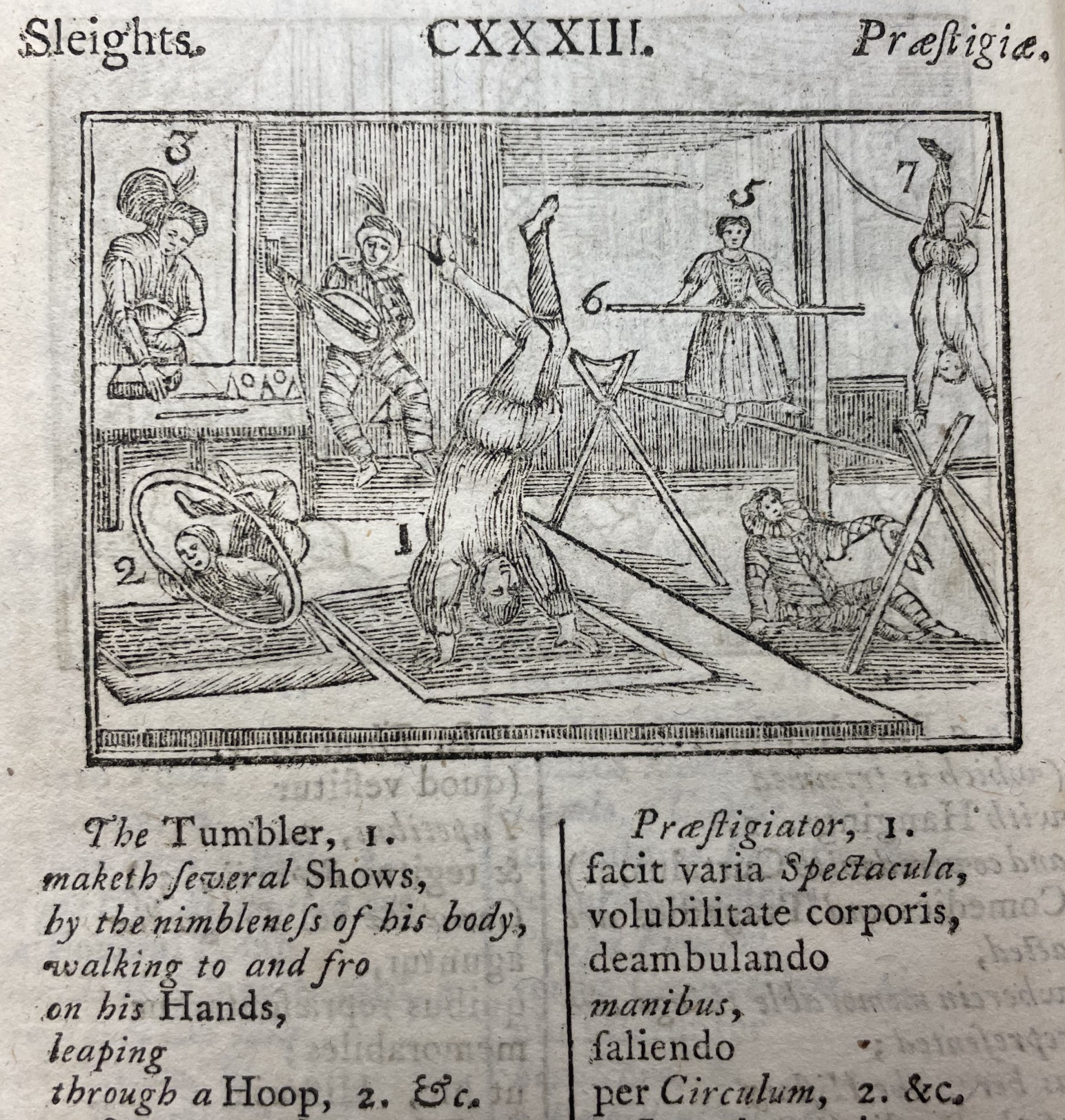
John Amos Comenius ( 1592-1670) published the Orbis in 1658 as an encyclopedic teaching device for young children that is also generally known as the first children’s picture book to be widely used. Comenius was an influential Czech teacher and education reformer, whom orphaned at a young age, did not attend school himself until he was sixteen. Comenius was an early advocate of formal universal education for all children including equality in female education, believing that every child should get to know themselves and the world by forming ideas through unrestricted play using pictures rather than words.
The Orbis features over 150 intaglio engravings made from copperplate prints showing everyday activities known to the world from cookery, making honey, learning the weather and studying virtues such as kindness, patience and fortitude. It also features a visualisation of the sounds animals make to better understand the world and the creatures that inhabit it. The book is divided into chapters on the physical and metaphysical world with an accompanying illustration. Each part of the illustration is numbered in an instructional manner and each number corresponds to a line of text. The text is printed in double columns in both English and Latin. This revolutionary format of illustrations coupled with simple sentences paved the way for the modern picture book for children that we see today.

There are references in the preface on the importance of allowing children to learn through their own senses and the importance of picture books as an instructional tool in the early stage of development before learning more “harsh” subjects such as grammar. Comenius writes:
‘Let it be given to children into their hands to delight themselves withal as they please, with the sight of the pictures, and making them as familiar to themselves as may be, and that even at home before they be put to school.‘…Then let them be examined ever and anon (especially now in the school) what this thing or that thing is, and is called, so that they may see nothing which they know not how to name, and that they can name nothing which they cannot shew.’
The book also has a lovely positive conclusion: ‘Go on now and read other good books’
This book not only teaches children about the world and how to name each object in Latin; it also teaches us today about how society lived in the 17th and 18th centuries, what educators knew and taught about the world at the time, what they felt was important to know and how children learned. This book will be of historical significance for those interested in primary and early childhood education.
The twelfth edition of John Comenius’ Orbis Sensualium Pictus is now catalogued and available on LibrarySearch. For access to this and other materials for consultation, please make an appointment by emailing Library.Russell@mu.ie or phoning (01) 708 3890.
Happy Christmas and a peaceful New Year to all our viewers and followers of MU Library Treasures from all in Special Collections and Archives at MU Library.
